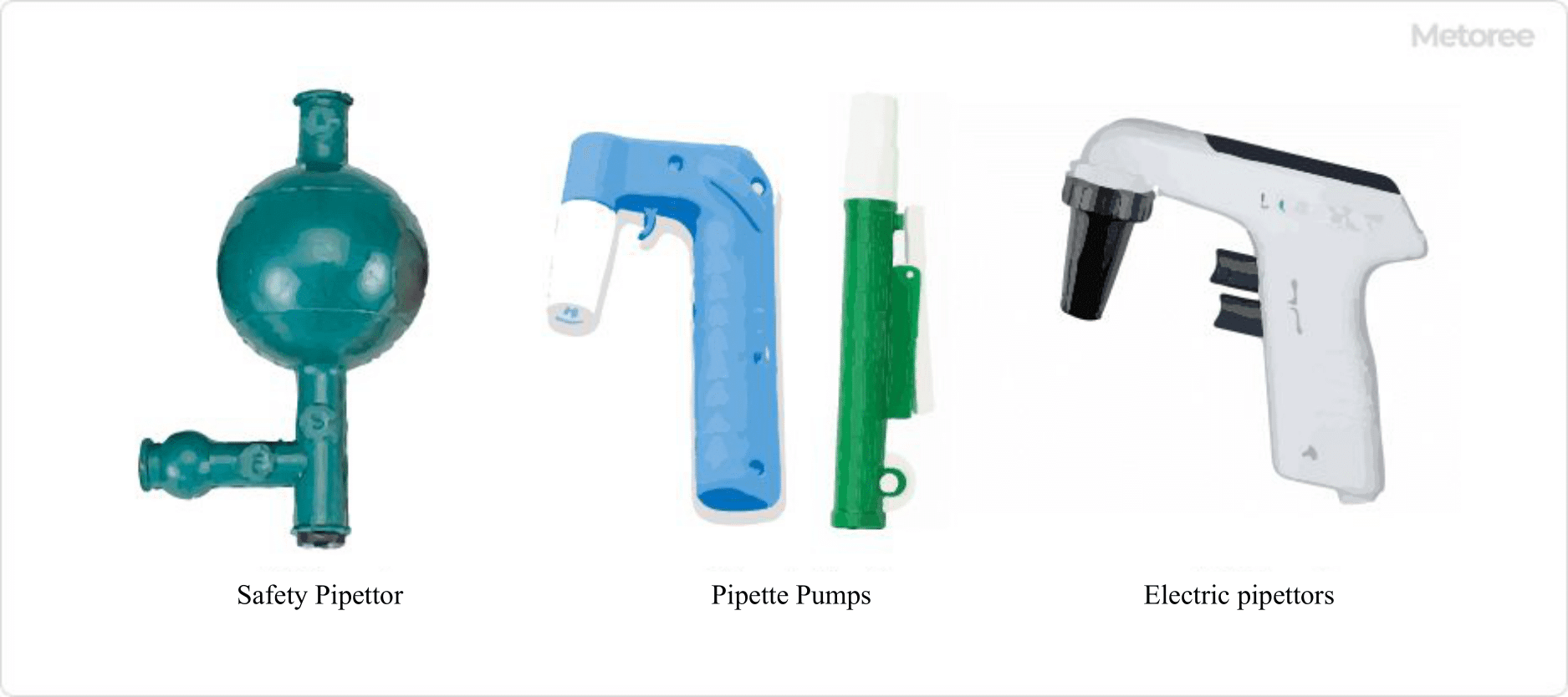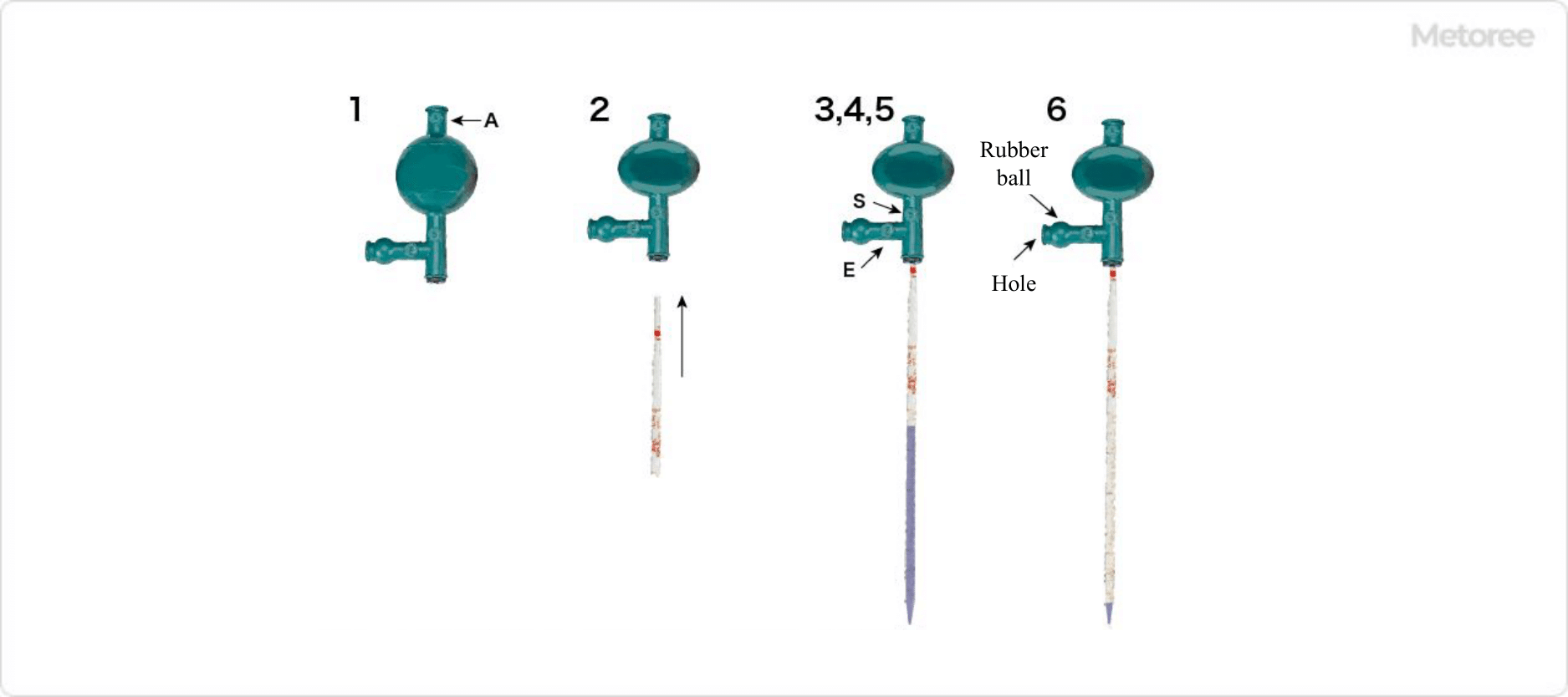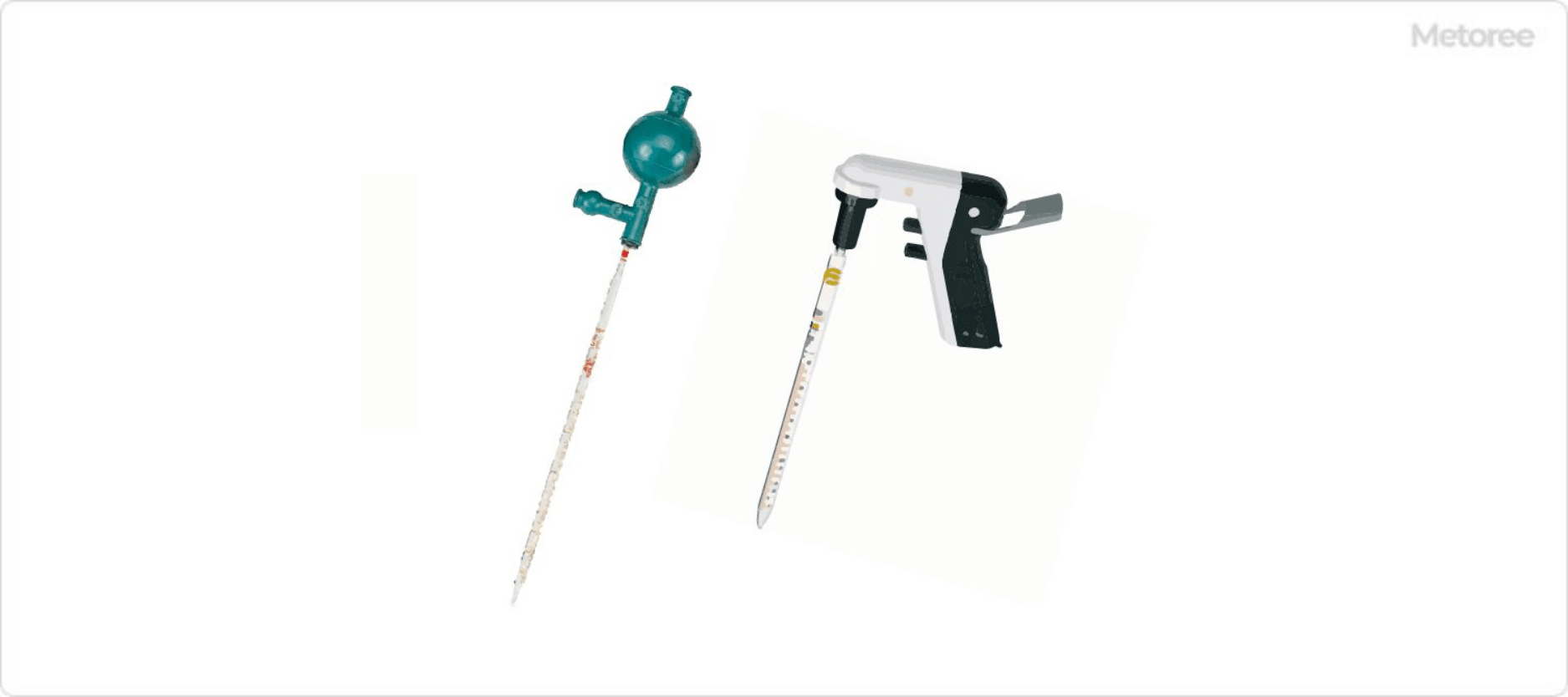What Is A Pipettor?

Figure 1. Various pipettors
A pipettor is an instrument that is attached to a pipette, such as a whole pipette or a female pipette, and performs the pipetting action of sucking up and dispensing solution.
Alternatively, it may refer to a pipette that has its own aspirating function. Pipettors include manual safety pipettors, pipette pumps, and electronic pipettors.
Recently, electronic pipettors are the most common; they can set the pipette volume with a dial on the hand, aspirate with a single push of a button, and dispense with a single push of a button.
Uses of Pipettors
Pipettors are used throughout the chemical and biological fields for all pipetting operations in which a fixed amount of liquid is aspirated to measure or dispense into another container.
Examples of liquids used include solvents, solutions, samples, media, additives, etc. Micropipettors are also commonly used for the injection of minute amounts of liquids of 1 mL or less.
Hole pipettes and scalpel pipettes were used in the past to suck up solutions by mouth. However, since it is dangerous to aspirate chemicals, especially hazardous substances, by mouth using pipettes or female pipettes, Pipettors are now commonly used as an alternative.
Manual and automatic pipettors are used for aspirating and dispensing a certain amount of organic substances, etc., because only the tip of the pipette is wetted and the tip can be removed without being touched.
Principles of Pipettors

Figure 2. Using the Safety Pipetter
One type of pipettor, the safety pipettor, is a manual type that is attached to a female pipette or similar instrument. The air intake valve is pressed to depress the rubber ball, the liquid intake valve is pressed to suck up the liquid, and the discharge valve is pressed to drain the liquid.
Instructions for use are as follows:
- While pressing A, release the air inside the large rubber ball
- Insert a pipette.
- Put the pipette tip on the solution and press S to suck up more sample
- Press E to adjust to the scale
- Align the pipette tip with the container you want to dispense from and press E to dispense the solution
- Since a little liquid remains at the tip of the pipette, press the rubber ball to dispense while plugging the hole at the tip of E.
Pipette pumps are constructed with a piston that moves air in and out by moving the piston up and down. The distance it moves up and down can be finely adjusted with a dial, and the amount of air that is moved in and out can be finely adjusted, making it possible to precisely and accurately adjust the amount of liquid.
Electronic pipettors use a motor to perform a series of operations that are labor-saving and can be done at the touch of a button. Most products on the market today are powered by rechargeable batteries. However, recharging time and whether the product can be used while recharging vary from product to product.
While a regular pipette needs to be cleaned and dried each time a chemical is changed, manual and motorized pipettors allow for the immediate injection of a different liquid by simply replacing the pipette tip that is wetted. The pipettes are designed to be removed without touching the tip, eliminating the risk of hazardous substances adhering to the body and improving not only workability, but also safety.
How to Select a Pipettor

Figure 3. Pipettor with pipette attached
Since each pipettor has its own characteristics, it is important to select the appropriate one for your experimental use and purpose.
First, identify the volume of liquid to be handled in one pipetting run in the experimental system you wish to use: a micropipette may be appropriate for small-scale experiments involving less than 1 mL, while a graduated pipette is appropriate for those involving more than 100 mL. A safety pipettor, pipette pump, or motorized pipettor is then preferred.
Most electric pipettors can handle female pipettes with a lower limit of 0.5mL or 1mL and an upper limit of 100mL. Pipette pumps are available for 2mL, 10mL, and 25mL. Also note that charging time, usability during charging, and aspiration/dispensing speeds vary from product to product.
In order to obtain accurate experimental data, products should be considered from the perspective of contamination prevention when selecting a product. It is desirable to select a product with a cap and filter that are designed for easy cleaning. In addition, it is recommended that caps and filters be autoclavable for biological experiments.